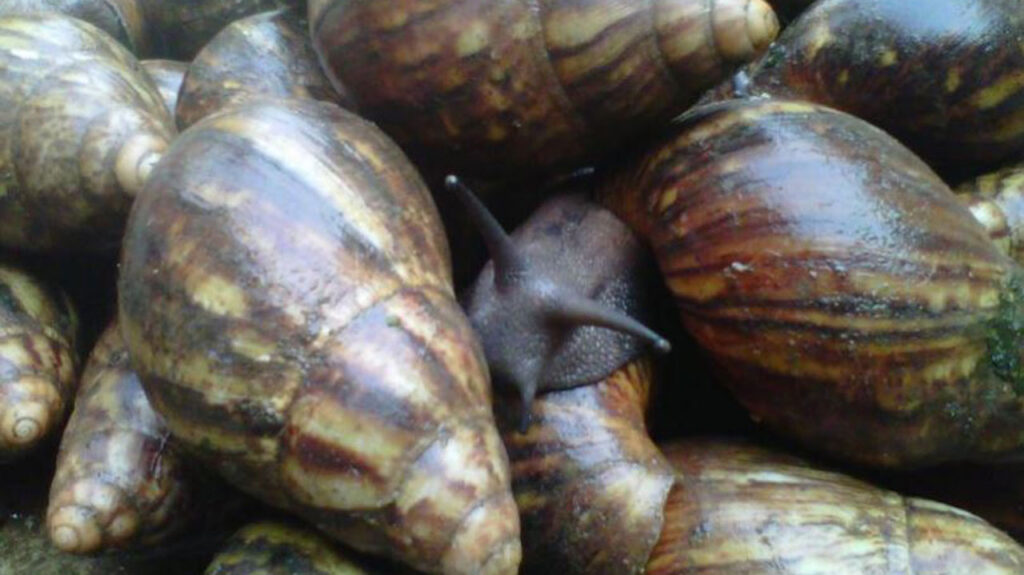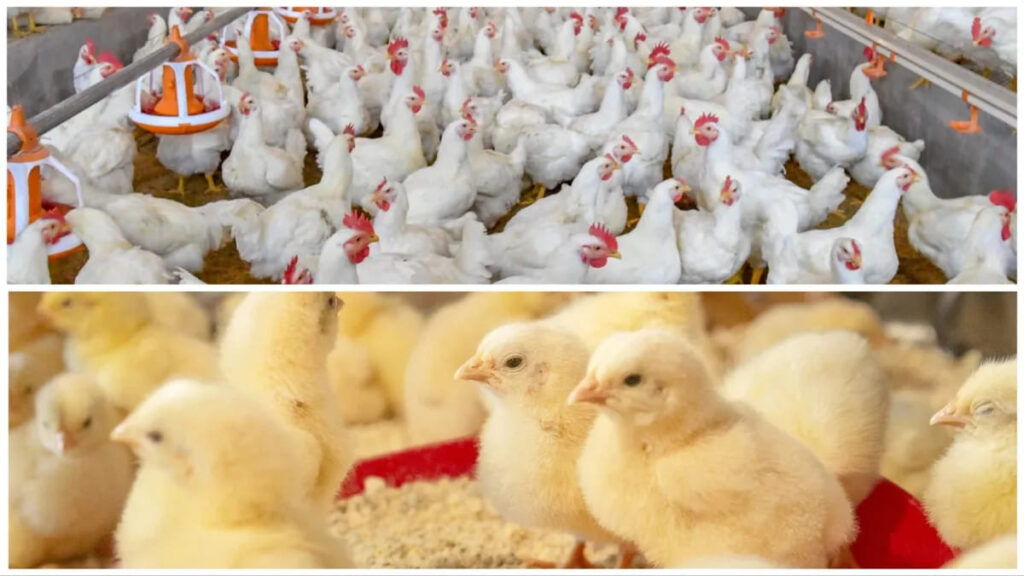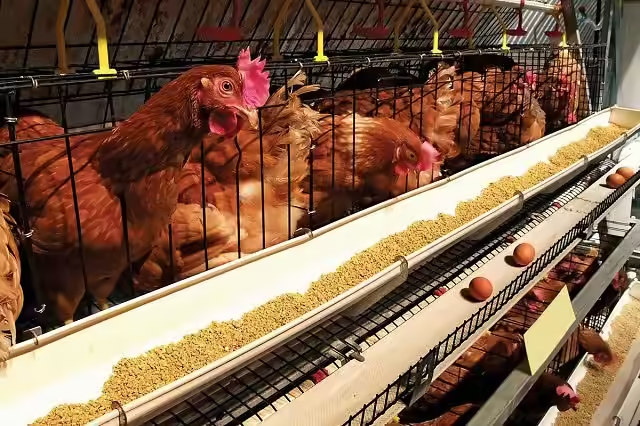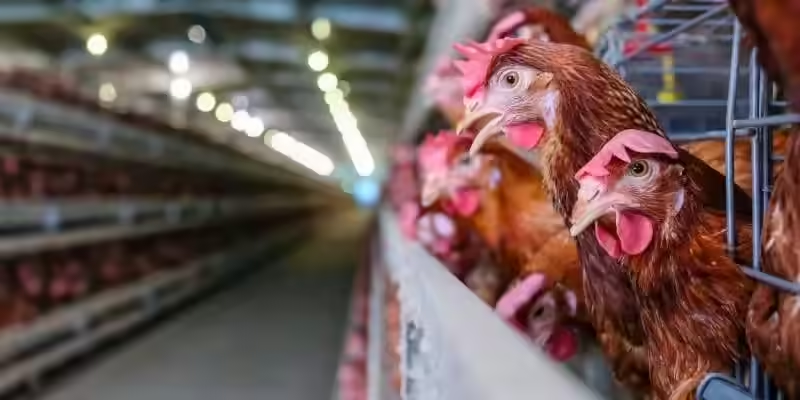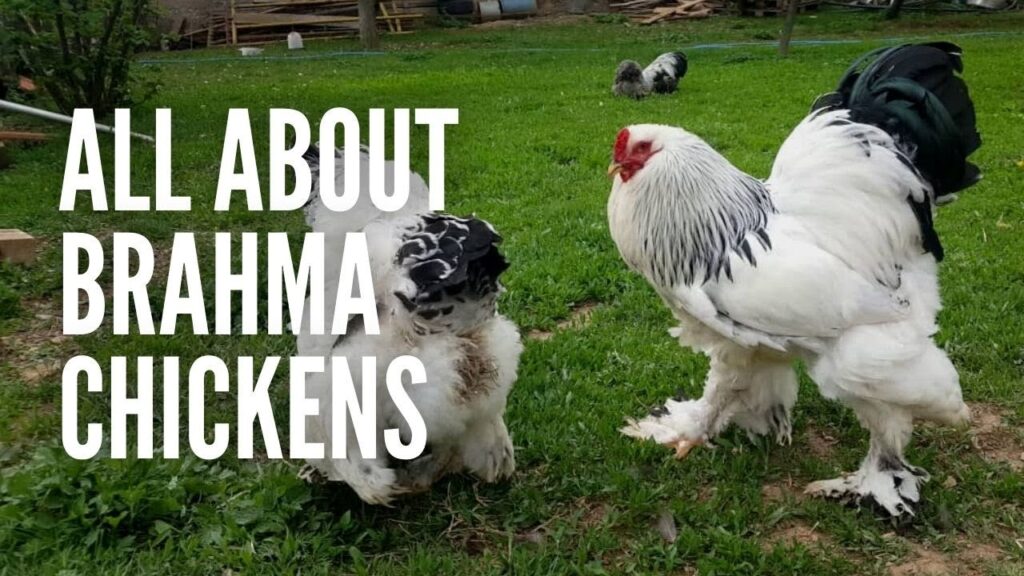Hey there, aspiring snail farmers and curious minds! Have you ever thought about snail farming? It might sound a bit unusual at first, but trust me, it’s a growing field with some serious opportunities. But here’s the absolute truth, the real “secret” if you will: your success hinges entirely on choosing the right snail species. Get this part wrong, and you’re swimming upstream!
Why is this decision so incredibly crucial? Well, think about it. Not all snails are created equal. They have different needs, different growth rates, and different market values. Picking a species that doesn’t thrive in your local climate is a recipe for disaster. You’ll spend a fortune trying to create the right conditions, and your snails still won’t be happy or productive. And what if you pick a species that nobody in your target market demand wants to buy? That’s just wasted effort and resources, isn’t it?
So, understanding the interplay between climate adaptability and market demand isn’t just a good idea; it’s the absolute foundation of profitable snail farming. It’s the difference between a thriving business and a frustrating hobby. Let’s unlock this secret together!
Key Takeaways: The Snail Farming Secret in a Nutshell
Thinking about getting into snail farming? Here’s the core secret you need to grasp from day one:
- Match the Snail to Your Climate: Pick a species that naturally thrives in your local temperature and humidity.
- Know Your Market: Understand who wants to buy your snails and what species/size they prefer.
- Consider Growth & Reproduction: Choose a species that grows quickly and reproduces well to ensure a steady supply.
- Research Local Regulations: Make sure the species is legal to farm in your area.
Get these four things right, and you’re well on your way to snail farming profitability!
Understanding Snail Farming Basics: More Than Just Slugs!
Before we get too deep into picking species, let’s make sure we’re all on the same page about what snail farming actually is. The fancy word for it is heliciculture. Basically, it’s the process of raising land snails specifically for human consumption or for use in other industries. We’re not just talking about random garden slugs here! This is a controlled environment, focused on optimal growth and reproduction.
Why are people getting into small-scale snail farming or even larger operations? There are some compelling benefits. For starters, snails reproduce relatively quickly and don’t require vast amounts of land like traditional livestock. The initial investment can be quite manageable, making it accessible for entrepreneurs. (Curious about starting small? Learn how many snails you need to get started in snail farming). Plus, snails convert feed into protein very efficiently.
And get this: the demand for snails, both locally and internationally, is significant and growing. They’re a delicacy in many parts of the world, and their use in the cosmetic and pharmaceutical industries is expanding. This means there’s real potential for snail farming profitability if you approach it strategically. (Want to know how profitable is snail farming? Check out this article!). It’s a fascinating corner of sustainable agriculture, offering a unique way to contribute to food security and potentially build a solid income stream.
The Secret Weapon: Picking the Perfect Snail for the Job
Alright, let’s get down to brass tacks. The real “secret” to successful snail farming truly lies in your snail species selection. It’s not just about grabbing any snail you see crawling around after a rain shower! You’ve got to be strategic.
What Makes a Snail “Farm-Worthy”? Key Factors to Consider
When you’re looking at different snail species, several things should be at the top of your checklist. Ignoring these factors is like trying to grow pineapples in the Arctic – it’s just not going to work out well! Here are the key factors that make a snail suitable for farming:
- Climate Adaptability: The snail must be able to thrive in your local temperature and humidity range without excessive environmental control costs.
- Growth Rate: You want a species that reaches market size relatively quickly for faster turnover and profitability.
- Reproduction Rate: A species with a high frequency of laying eggs and a good number of eggs per clutch ensures a consistent supply of young snails for breeding and sale.
- Market Demand: There must be a willing market for the specific species, size, and intended use (culinary, cosmetic, etc.).
- Disease Resistance: Hardy species that are less prone to common snail diseases are easier and less costly to manage.
- Legality: Ensure the species is legal to farm in your region, as some are considered invasive pests elsewhere.
Meet the Contenders: Popular Snail Species for Farming
Okay, with those factors in mind, let’s look at some of the most popular snail species raised around the world. Each has its own set of characteristics that make it suitable for different climates and markets. Here’s a comparison to help you see the differences at a glance:
| Species | Climate Suitability | Growth Rate | Reproduction | Primary Market Use(s) | Nigerian Relevance |
| Achatina achatina | Tropical | Fast | High egg production | Culinary (Meat) | Native, widely farmed for local consumption/markets |
| Archachatina marginata | Tropical | Fast | High egg production | Culinary (Meat) | Native, very popular in Nigeria for farming/food |
| Helix aspersa (Petit Gris) | Temperate | Moderate | High frequency, good clutch | Culinary (Escargot), Mucin | Not native, requires controlled environment in tropics |
| Helix pomatia (Roman Snail) | Temperate | Slow | Lower frequency/clutch | Culinary (High-end Escargot) | Not native, requires controlled environment in tropics |
The Giants of the Tropics: A Nigerian Focus
In tropical regions like Nigeria, the big players are undoubtedly the African giant snails.
- Achatina achatina (Giant African Land Snail): This is one of the largest land snail species out there, native to West Africa, including Nigeria. They grow big and fast, which makes them very popular for meat production in tropical climates. They need warm temperatures and high humidity, conditions that align well with much of Nigeria. They are a staple in local markets.
- Archachatina marginata (Giant West African Snail): Another large African species, also native to and extremely popular in Nigerian snail farming. They are known for good growth rates and are often preferred in certain Nigerian markets due to taste and size. Like Achatina achatina, they require warm, humid conditions, making them well-suited for farming across the country. These are arguably the most commonly farmed species in Nigeria for local consumption.
These tropical snail species are fantastic if you’re in the right climate, offering impressive size and growth potential, and they have a strong existing market demand in Nigeria.
Temperate Favorites: Considerations Outside the Tropics
For those in cooler, temperate parts of the world (like much of Europe, North America, or parts of Australia), different species are the stars of the show.
- Helix aspersa (Common Garden Snail or Petit Gris): This is probably the most widely farmed snail globally, found naturally in Mediterranean climates but farmed successfully in many temperate regions. They are smaller than the African giants but reproduce prolifically and are highly sought after in European and North American culinary markets. Their climate adaptability is broader than tropical species, but they still need protection from harsh winters. Farming these in Nigeria would likely require significant investment in climate control.
- Helix pomatia (Roman Snail or Escargot de Bourgogne): This is a larger temperate species, famous in French cuisine. They grow slower than Helix aspersa and have a lower reproduction rate, but their larger size and reputation command a higher market price in specific niches. They are adapted to cooler, temperate climates but require hibernation periods. Like Helix aspersa, farming these in a tropical climate would be challenging and costly.
Choosing among these, or other less common species, means weighing their natural habitat against your farm’s location and, of course, figuring out which snail your potential customers are clamoring for. It’s a bit of a balancing act, but getting it right is the core of the secret of snail farming.
Matching Your Snail Species to Your Climate: A Crucial Step
Alright, let’s drill down into the climate adaptability piece. This isn’t just about average temperature; it’s about understanding the specific environmental needs of your chosen snail species and how to meet them where you are.
Tropical Climates: Heat, Humidity, and Happy Giants
If you’re in a tropical region, you’ve got an advantage when it comes to farming the African giant snails like Achatina achatina and Archachatina marginata. These guys thrive in warmth and high humidity.
Ideal temperatures for these tropical snail species are generally between 25°C and 30°C (77°F to 86°F). Humidity levels should be kept high, ideally between 75% and 95%. Source: FAO Fisheries and Aquaculture Department – Snail Culture. This usually aligns well with natural tropical conditions, but you still need to manage their environment. For instance, ensuring good ventilation is key to prevent mold and disease, even in humid conditions. You might need to provide shade to prevent overheating in direct sun.
Temperate Climates: Managing the Seasons
Farming temperate snail species like Helix aspersa and Helix pomatia in cooler climates presents a different set of challenges, mainly dealing with temperature fluctuations and winter. These snails are adapted to cooler conditions, but they can’t survive freezing temperatures.
Helix aspersa is more tolerant of a range of temperatures but generally prefers something between 15°C and 25°C (59°F to 77°F) for active growth. Source: University of California, Davis – Snails as Pests. Helix pomatia prefers slightly cooler conditions. Both species will naturally go into hibernation (a state of dormancy) when temperatures drop too low or conditions become too dry.
In temperate snail farming, you’ll need to either provide heated indoor facilities during winter or manage outdoor pens to allow for natural hibernation. Induced hibernation can be a useful technique, allowing you to control the snail’s cycle and time your production. This involves gradually lowering temperature and humidity. Adapting your snail farming practices to the local environmental conditions is paramount for these species. This might involve building simple greenhouses, using shade netting, or implementing irrigation systems to maintain humidity during dry spells.
Adapting Practices to Local Conditions
No matter your climate, you’ll need to adapt your snail farming setup. In very wet tropical areas, ensuring good drainage in pens is vital to prevent fungal diseases. In drier regions, temperate or tropical, you’ll need reliable watering systems to keep humidity up. Think about protection from predators, too – birds, rodents, and even some insects can prey on snails. Your local environment will dictate the specific challenges you face and the adaptations you need to make to keep your snails safe and happy. It’s all part of becoming a skilled heliculturist!
Aligning Your Snails with Market Demand: What Do People Want?
So, you’ve thought about the climate and which snails will thrive. Now, let’s talk about the business end: market demand. What are you going to do with all these snails once they’re grown? Understanding your market is just as important as understanding your snails.
Understanding Local and International Market Preferences
This requires a bit of detective work. Start local. Are there restaurants in your area that serve escargot? Are there communities that traditionally consume snails? What size and type of snail do they prefer? Don’t be afraid to talk to chefs, market vendors, and potential customers. In Nigeria, for example, the larger African species are highly preferred for consumption.
Expanding to international markets opens up more possibilities, but also more regulations and logistics. European markets, for example, have a strong demand for Helix aspersa and Helix pomatia. Asian markets might prefer the larger African species. Understanding these preferences through thorough snail market analysis will guide your species choice and production goals.
Species Favored for Culinary Uses
For the dinner plate, the most popular species are generally:
- Helix aspersa: The “Petit Gris” is a global favorite, especially in Europe and North America. Its size and texture are well-suited for classic escargot dishes.
- Helix pomatia: The “Roman Snail” is prized in French cuisine for its larger size and distinct flavor. It commands a higher price but is slower to grow.
- Achatina achatina and Archachatina marginata: These are widely consumed in many parts of Africa, including Nigeria, and are gaining popularity elsewhere. Their large size makes them efficient for meat production.
If your primary goal is selling snail meat, focus on species with good growth rate and market acceptance for culinary purposes in your target region.
Species with Potential in Cosmetic and Pharmaceutical Industries
Beyond the plate, snails are increasingly valued for the mucus they produce. Snail slime (mucin) contains compounds believed to have beneficial properties for skin repair and regeneration.
- Helix aspersa is currently the most commonly used species for cosmetic mucin production. Its mucus is relatively easy to collect, and the species is widely farmed.
While the market for snail mucin is growing, it requires different processing and quality control compared to selling snails for meat. If you’re considering this route, research the specific requirements and potential buyers in the cosmetic and pharmaceutical industries. This could open up entirely new revenue streams for your snail farming venture.
Aligning your chosen snail species selection with a clear understanding of your target market demand is a critical step towards ensuring snail farming profitability. It’s about finding that sweet spot where what you can successfully raise matches what people want to buy.
Learning from the Field: Case Studies in Snail Farming Success
You know, reading about the theory is one thing, but seeing how it plays out in the real world? That’s where the rubber meets the road! Looking at case studies of successful snail farming operations really drives home why snail species selection based on climate adaptability and market demand is so darn important.
Let me tell you about a couple of scenarios I’ve seen or heard about that highlight this perfectly.
Case Study 1: The Tropical Triumph (A Nigerian Example)
Picture this: a farmer in a humid, warm West African country like Nigeria. They looked at their natural environment – hot, consistent temperatures, high rainfall – and thought, “What snail would love this?” The answer was clear: the native giant African land snails, specifically Archachatina marginata. This species is already adapted to the climate, so the farmer didn’t need expensive heating or cooling systems. They focused on building simple, shaded pens that provided humidity and protection. They also found that these snails readily consume local feed sources like pawpaw leaves and cassava leaves.
They also did their homework on the market demand. They knew that these large snails are a traditional and popular food source locally in Nigeria. Restaurants and markets were already buying them from wild harvesters. By farming them, they could offer a consistent, reliable supply of high-quality snails. Their snail farming profitability grew because their costs were low (thanks to the climate match and readily available feed) and their market was ready and waiting. The lesson here? Don’t fight your climate; work with it! And always, always know who’s going to buy your product.
Case Study 2: The Temperate Turnaround
Now, consider a farmer in a cooler, temperate part of Europe. They initially tried farming the African giants because they heard they grew fast. Big mistake! The snails struggled with the cold, requiring expensive heated greenhouses that ate into profits. Plus, the local market primarily wanted the smaller Helix aspersa for classic escargot dishes.
This farmer pivoted. They switched to Helix aspersa. While smaller, these temperate snail species were much better suited to the local climate. They still needed protection in winter, but managing hibernation was far less costly than heating tropical snails year-round. Crucially, they tapped into the existing market demand for Helix aspersa. They focused on quality and consistent sizing, building relationships with local restaurants. Their farm became profitable once they matched the snail to both the climate and the market. The takeaway? Sometimes the “biggest” or “fastest growing” isn’t the “best” if it doesn’t fit your conditions and market.
Key Lessons Learned
These examples, and many others like them, teach us a few vital lessons for successful snail farming:
- Research is King: Before you buy a single snail, research your local climate thoroughly and research your potential market demand.
- Match the Climate: Choose a snail species that is naturally adapted to your temperature range and humidity levels. This saves you money and makes for happier, more productive snails.
- Know Your Buyer: Understand what size, species, and quality your target market wants. Farm for that specific demand.
- Start Smart: Don’t just jump on a trend. Base your snail species selection on solid information about climate adaptability and market demand.
Embracing these lessons is a huge part of unlocking the secret of snail farming and setting yourself up for long-term success. It’s about making informed choices, not just hopeful guesses.
Frequently Asked Questions About Snail Farming
Got more questions swirling around? That’s totally normal! Here are some FAQs to help clear things up as you consider getting into snail farming:
Is snail farming profitable?
Yes, snail farming profitability is definitely possible, but it depends heavily on your planning and management. Success comes from choosing the right snail species for your climate and market demand, managing your farm efficiently, and finding reliable buyers. It’s not a get-rich-quick scheme, but a well-run operation can be quite lucrative. (Find out more about how profitable is snail farming).
How much space do I need for snail farming?
You might be surprised! Small-scale snail farming can be done in a relatively small area. The exact space needed depends on the snail species you choose and the scale of your operation. Some systems use vertical stacking to maximize space. What’s more important than vast acreage is providing the right conditions within the enclosure. (Thinking about starting small? Learn how to start snail farming at home).
What do farmed snails eat?
Farmed snails eat a variety of things! Their diet typically includes leafy greens (like lettuce, cabbage, and शंकर), fruits, vegetables, and specialized snail feed (often a calcium-rich mixture to help their shells grow strong). Providing a balanced diet is crucial for good growth rate and health. (Get details on what snails can eat and how to feed snails to grow faster).
How long does it take for snails to grow to market size?
The time it takes varies significantly depending on the snail species. Tropical snail species like Achatina achatina and Archachatina marginata can reach market size in about 6-12 months. Temperate snail species like Helix aspersa usually take 10-18 months, sometimes longer if they undergo hibernation. (Learn more about how many months it takes for a snail to grow).
What are the biggest challenges in snail farming?
Challenges can include managing temperature and humidity, preventing diseases and predators, ensuring proper nutrition, and, importantly, securing a consistent market for your snails. That’s why climate adaptability and understanding market demand are so vital from the start!
Do I need special permits for snail farming?
Regulations vary widely by location. In some places, certain snail species (like the African giants) are considered invasive and may be restricted or require special permits. Always check with your local and national agricultural authorities before starting to understand any legal requirements for heliciculture in your area.
Conclusion: Embracing the Secret and Moving Forward
So, we’ve journeyed through the essentials of snail farming, from understanding the basics of heliciculture to meeting the key players in the world of snail species. We’ve seen why factors like climate adaptability, growth rate, reproduction, and especially market demand are not just minor details, but the very pillars of a successful operation.
The real secret of snail farming isn’t some hidden technique; it’s the power of making informed decisions right from the start. It’s about doing your homework, understanding the specific needs of different snail species, and critically analyzing who will buy your product. Whether you’re considering tropical snail species like Achatina achatina or Archachatina marginata, or temperate snail species like Helix aspersa or Helix pomatia, your choice must align with your local conditions and target market. This strategic snail species selection is what truly drives snail farming profitability.
For those of you dreaming of starting your own small-scale snail farming venture, I hope this guide has shed some light and given you the confidence to take that first step – the research step! Don’t just dive in headfirst. Take the time to understand your climate, explore your market, and choose the snail species that gives you the best chance of success. It’s a fascinating and rewarding form of sustainable agriculture, and with the right planning, you absolutely can unlock its potential.
Are you ready to embrace the secret and start planning your own snail farming journey? What species are you thinking about, and why? Let me know your thoughts below!
